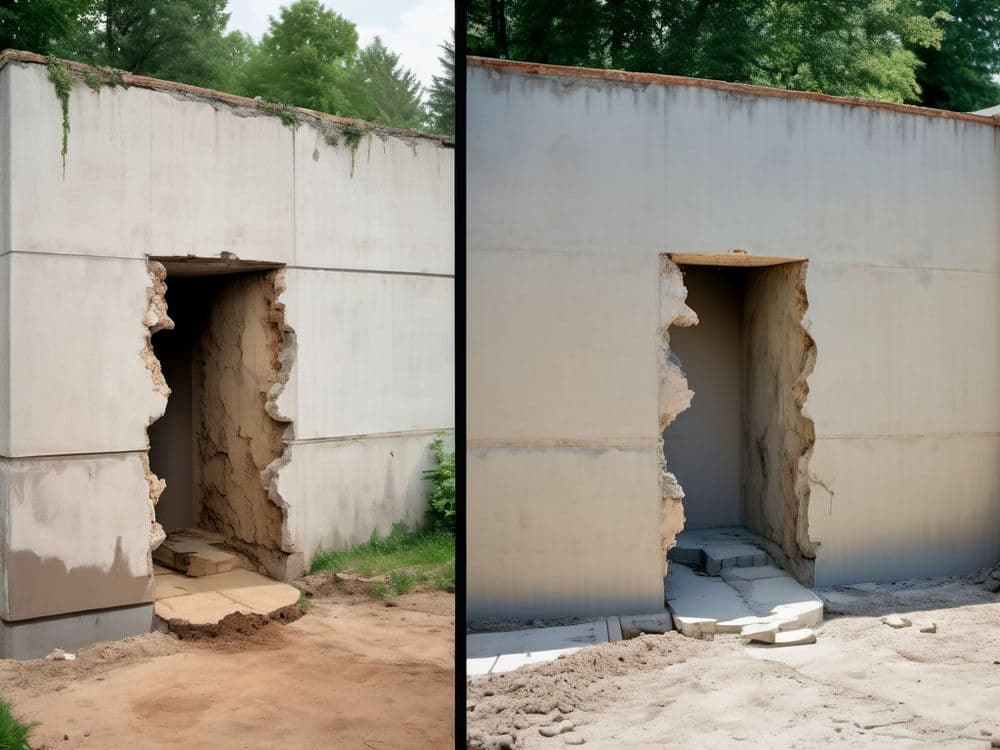

Standard square shaft helical piles are usually installed using compact equipment, such as a skid-steer loading machine or an excavator, equipped with an hydraulic drive head. This approach not only makes the installation process quicker but also lessens the requirement of extensive preparation for the soil. The operator plays an essential part in making sure that the piles are properly placed, using both visual cues as well as assistance from ground personnel.
One of the main elements of helical pile installation is to achieve the capacity of load you want to achieve. This is when the relationship between the installation tension and capacity is crucial. Contemporary torque indicator, such as the Chance Digital Torque Indicator, play a pivotal role in this process by providing precise measurements, and removing the uncertainty associated with estimates of pressure in hydraulic systems.
The speed of operation during installation is vital, generally ranges between 8 and 16 RPM. This controlled speed ensures that the pile advances approximately three inches each revolution consistent with the helical plates' pitch. If the pile does not move in the manner expected, adjustments such as increasing downward thrust or adding larger plates for helicals are made to avoid 'spinning out', akin to a screw stripping its threads.
Helical piles can speed up a home renovation National Post
Posted by on 2023-04-25
Grand Forks begins multi-year expansion of wastewater treatment plant Grand Forks Herald
Posted by on 2023-11-06
Remote-controlled Demolition Equipment Solves Challenging Helical Pier Project For Construction Pros
Posted by on 2022-04-05
Helical piles help keep heavy equipment safely supported on large solar projects Solar Power World
Posted by on 2018-08-27
Construction companies are always looking for innovative solutions to enhance efficiency, reduce costs, and ensure the structural integrity. In this quest, helical piles have emerged as an innovative technology revolutionizing how we approach foundational support. This article explains the reasons behind the growing use of these piles for construction, focusing on their distinct advantages and the applications driving this transformation.
Helical piles, often called screw piles, are foundation solutions used to secure new or existing foundations. They are constructed of steel and have an helical lead section which allows they to go into ground in the same way as a screw into wood. This is a major contrast to traditional concrete foundations, and provides a number of advantages that cater to modern requirements for construction.

Helical piles are not just useful for new construction, but also play a vital part in repair and renovation projects. They are great for securing existing buildings, offering the ability to build and stabilize damaged or aging foundations. The ability to install them with minimal noise and vibration can be a blessing for areas that are densely populated or in projects where maintaining the integrity of structures nearby is essential.
In summary, helical piles represent an enormous leap ahead in foundation technology. They provide solid, stable and flexible foundation solution to a range of construction projects. Their speedy installation, adaptability as well as their sustainability and instant load-bearing capacity make them a great choice for future building endeavors. The construction sector continues to evolve and face new issues, helical piles are ready to provide the stability and strength required for the buildings of the future.
In addition to their primary advantages, helical piles come with a range of other advantageous features that further solidify their position in modern construction. These include:
These additional attributes, along with their primary benefits, create the helical piles a highly versatile and efficient foundation option for a variety of construction projects.

Versatility is a key attribute of helical piles. They are adaptable to a range of soil types and conditions, making an excellent choice for a range of construction projects, from industrial structures to residential ones. Their design is able to be modified to meet the specific requirements of load which makes them more suitable for various situations of construction.
Helical piles also have the advantage of immediate load bearing capacity. After installation, they are able to be able to support loads immediately, a significant benefit over conventional methods that have to wait for concrete to cure. This attribute is particularly valuable in projects with tight deadlines or in emergency situations when timing is critical.
Lastly, the sustainability of helical piles can't be neglected. They are typically made of recycled steel. They are fully accessible, which allows for reuse in subsequent projects. This reuse, along with the lower carbon footprint during installation is in line with the growing emphasis on eco-friendly construction practices.
In conclusion, the hidden strengths of the installation of helical piles such as speed, low environmental impact, a wide range of applications in load capacity and speed of installation, and environmental sustainability - are the reason for their increasing popularity in the construction industry. While we seek the most efficient, cost-effective and environmentally responsible building methods Helical piles are an effective, creative solution to today's construction challenges.
In addition to the strengths of helical piles Their use in construction projects brings many advantages. These can be outlined in the following manner:
These factors highlight the many benefits of using the helical piles in highlighting their role in improving sustainability, efficiency, and cost-effectiveness in construction.
